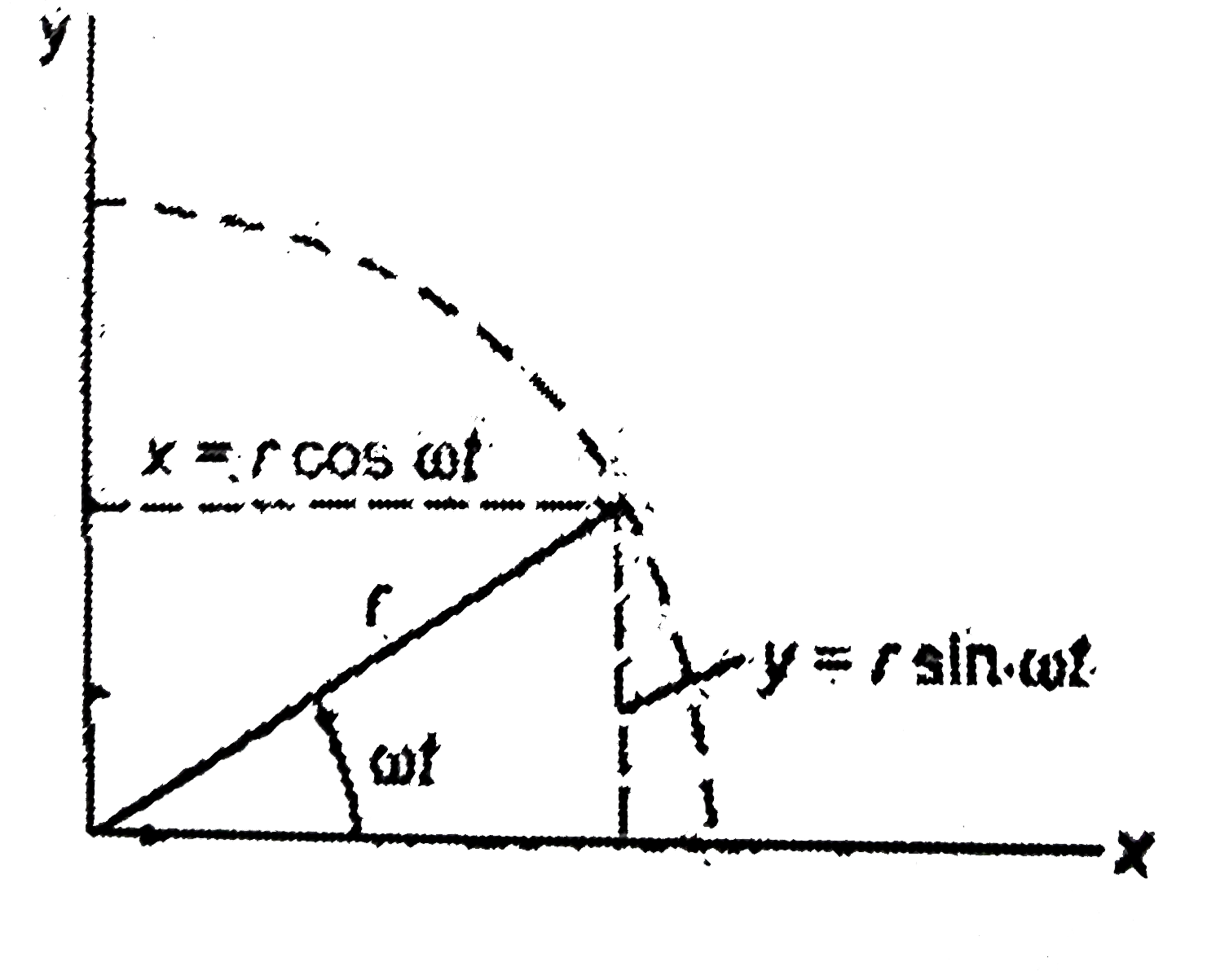A particle is moving with velocity →v=k(yˆi+xˆj), where k is a constant . The genergal equation for its path is
y=x2+ constant
y2=x+ constant
xy= constant
y2=x2+ constant
The correct Answer is:D
Step by step video, text & image solution for A particle is moving with velocity vecv = k( y hat(i) + x hat(j)) , where k is a constant . The genergal equation for its path is by Physics experts to help you in doubts & scoring excellent marks in Class 12 exams.
Updated on:21/07/2023Topper's Solved these Questions
- PROJECTILE MOTIONBOOK - MOTIONCHAPTER - PROJECTILE MOTIONEXERCISE - EXERCISE-3 (SECTION-A)
11 Videos
- PHOTOELECTRIC EFFECT BOOK - MOTIONCHAPTER - PHOTOELECTRIC EFFECT EXERCISE - EXERCISE -3 (PREVIOUS YEAR PROBLEMS (JEE MAIN))
12 Videos
- RADIOACTIVITY & NUCLEAR PHYSICSBOOK - MOTIONCHAPTER - RADIOACTIVITY & NUCLEAR PHYSICSEXERCISE - Exercise-3
81 Videos
Similar Questions
Knowledge Check
A particle is moving in a plane with velocity given by →u=u0ˆi+(aωcosωt)ˆj, where ˆi and ˆj are unit vectors along x and y axes respectively. If particle is at the origin at t=0. Calculate the trajectory of the particle :-
Ay=asin(u0ωx)By=asin(ωxu0)Cy=1a.sin(u0ωx)Dy=1a.sin(ωxu0)A particle is moving with a constant acceleration →a=ˆi−2ˆjm/s2 and instantaneous velocity →v=ˆi+2ˆj+2ˆkm/s then rate of change of speed of particle 1 second after this instant will be :
A√5m/s2B√3m/s2C√10m/s2DNone of theseA plane mirror is moving with velocity 4(ˆi)+5(ˆj)+8(ˆk). A point object in front of the mirror moves with a velocity 3(ˆi)+4(ˆj)+5(ˆk). Here, ˆk is along the normal to the plane mirror and facing towards the object. The velocity of the image is
A−3(ˆi)−4(ˆj)+5(ˆk)B3(ˆi)+4(ˆj)+11(ˆk)C−4(ˆi)+5(ˆj)+11(ˆk)D7(ˆi)+9(ˆj)+3(ˆk)
Consider a particle moving in the x−y plane according to r=r(cosωtˆi+sinωtˆj), where r and ω are constants. Find the trajectory, the velocity, and the acceleration.

View SolutionThe position vector of a particle is given by →r=kcosωˆi+ksinωˆj=xˆi+yˆj, where k and ω are constants and t time. Find the angle between the position vector and the velocity vector. Also determine the trajectory of the particle.
View SolutionA particle is moving with speed 6m/s along the direction of →A=2ˆi+2ˆj−ˆk, then its velocity is :
View SolutionA particle moves with a velocity (5ˆi+3ˆj+6ˆk)m/s under the influence of a constant force (5ˆi+5ˆj+10ˆk)N. The instantaneous power applied to the particle is
View SolutionAt a given instant of time the position vector of a particle moving in a circle with a velocity 3ˆi−4ˆj+5ˆk is ˆi+9ˆj−8ˆk. Its angular velocity at that time is:
View Solution
